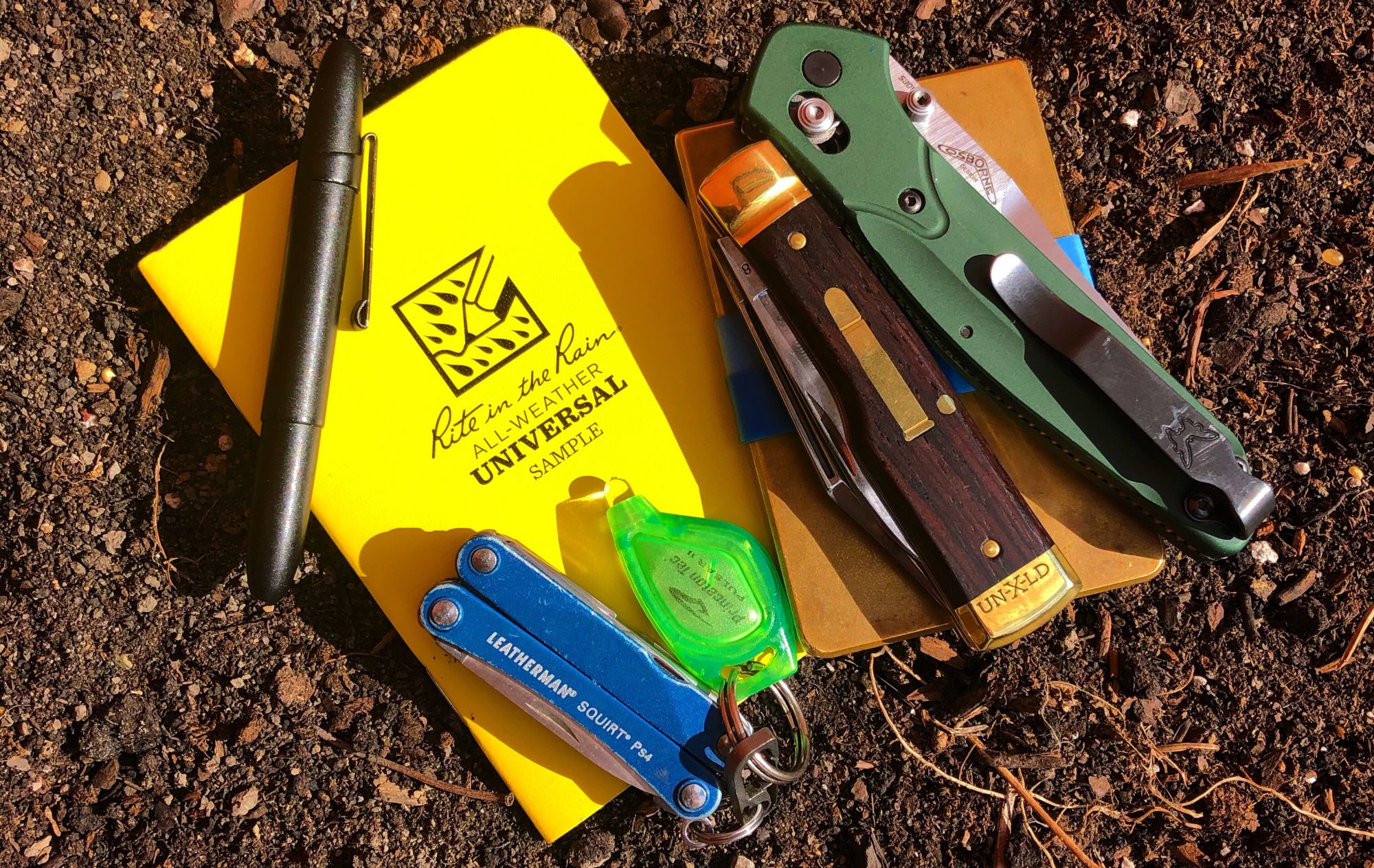I have been intrigued by Axial knives since I first saw one of their (quite unique) ads on Instagram. I reached out and was thrilled to learn that they were a new brand planning to manufacture Out The Front knives in the USA. After reviewing some of their excellent OTFs, they shared that they had a fixed blade design coming out soon; the Alpine.

The first version of the Alpine was a fine little EDC fixed blade, but it had some things that could be improved. The first sheath I got didn’t have quite enough retention, allowing the knife to easily shake out if upside down. I also found the lack of a guard meant my finger would hit the heel of the edge at times, so I ground it down. Finally, I knew that the owners of Axial took pride in producing their knives in house in America, so the first version being made overseas made it feel a bit like a placeholder.

Enter the new Alpine V2. Not only does this new version of the Alpine fix all those areas of lacking from the original, it has a refined design and a new patent pending modular inlay system. The second version of the Alpine is made in the USA, primarily in house at Axial with some processes done at other domestic OEMs. The sheath has great retention and comes with an UltiClip, which can be adjusted for carry at any height and for carry in the waistband, in a pocket, on a belt, or really anywhere you can think of (like, for me, on a fanny pack strap). They added a solid finger guard and sharpening choil, so there’s almost no chance of your hand slipping onto the edge. While the original had only a drop point, the Alpine V2 comes in three blade shapes that coincide with those available on Axial’s flagship OTF the Shift; Wharncliffe, Tanto, and Drop Point.The handle shape is also adjusted some, and makes for incredible ergonomics considering the relatively small size of the knife.
The biggest change, however, is the addition of Axial’s patent pending MagFlex modular inlay system. With MagFlex, the handle is made up of an outer frame and inner magnetic inlay area. So far, they have offered the frame section in stonewashed titanium and inlays of Black G10 or OD Green Micarta, but TODAY (3/22/24 5PM EST) they are releasing several inlay variants in Fat Carbon. I’m planning to buy one, but they all look so good I’m not 100% sure which I’ll be picking up yet (leaning toward Black Dunes). I LOVE the idea of this inlay system because 1) it’s super easy to use and change & 2) it makes for basically endless opportunity for customization. I let them know that I’d love to see some natural materials, like jigged bone or checkered wood… maybe even abalone or pearl! Basically, the inlays work by having two magnets on each piece that pull them into the well fitted cutout area and then toward each other. They included a simple little pick tool to pop the inlays out for changing, but they recommended putting a slight bend in the tool to make it easier to use. I found it to be quick and easy once I applied the bend and got the hang of it. I would imagine that they’ll add different frame section options, as they already offered full handles (without the MagFlex inlay system) in anodized titanium, G10, and Micarta.
I found the Alpine to be a pleasure to carry and use. It was easy to carry with its slender design and UltiClip setup. I did find the sheath put some scratches on the blade from putting the knife in and out during use. Speaking of use, the blade cut great. I have the Wharncliffe version (which I would say is probably closer to a Sheepfoot) and it worked great for my normal daily tasks such as opening boxes, breaking down cardboard, and cutting food into little pieces for my son. The other two blade options look really great also, with a modern twist on classic shapes. The knife cut really well, and seemed to be ground nice and thin for slicing. Speaking of which, the Alpine V2 is in Magnacut, which is the undisputed hype king of knife steels right now. It has great edge retention and corrosion resistance. Overall, this knife has really impressed me and won me over to EDCing a fixed blade. In the past I have always shied away from carrying fixed blades unless I was hunting, fishing, or some other outdoor activity. The Alpine’s ease of carry, great design, and unique aesthetics make it a great option for true Every Day Carry.
If you decide to pick up your own Axial Alpine V2, make sure to use one of the links in this article (affiliate links that help support Knife Thoughts) and use my discount code “KNIFETHOUGHTS”.






































